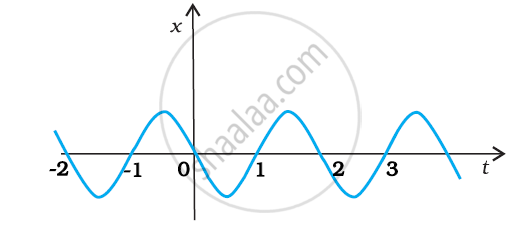Advertisements
Advertisements
Question
It is a common observation that rain clouds can be at about a kilometre altitude above the ground.
- If a rain drop falls from such a height freely under gravity, what will be its speed? Also calculate in km/h. ( g = 10 m/s2)
- A typical rain drop is about 4mm diameter. Momentum is mass x speed in magnitude. Estimate its momentum when it hits ground.
- Estimate the time required to flatten the drop.
- Rate of change of momentum is force. Estimate how much force such a drop would exert on you.
- Estimate the order of magnitude force on umbrella. Typical lateral separation between two rain drops is 5 cm.
(Assume that umbrella is circular and has a diameter of 1 m and cloth is not pierced through !!)
Solution
Given, height (h) = 1 km = 100 m
g = 10 m/s2
a. Velocity attained by the raindrop in freely falling through a height h.
v = `sqrt(2gh)`
= `sqrt(2 xx 10 xx 1000)`
= `100sqrt(2)` m/s
= `100sqrt(2) xx (60 xx 60)/1000` km/h
= `360sqrt(2)` km/h ≈ 510 km/h
b. Diameter of the drop (d) = 2r = 4 mm
∴ Radius of the drop (r) = 2 mm = 2 × 10–3 m
Mass of a raindrop (m) = V × p
= `4/3 pir^3p`
= `4/3 xx 22/7 xx (2 xx 10^-3)^3 xx 10^3` .....(∵ Density of water = 103 kg/m3)
= 3.4 × 10–5 kg
The momentum of the raindrop (p) = mv
= `3.4 xx 10^-5 xx 100sqrt(2)`
= `4.7 xx 10^-3` kg-m/s
≈ `5 xx 10^-3` kg-m/s
c. Time required to fatten the drop = time taken by the drop to travel the distance equal to the diameter of the drop near the ground
`t = d/v`
= `(4 xx 10^3)/(100 sqrt(2))`
= ``0.028 xx 10^-3` s
= `2.8 xx 10^-5` s ≈ 30 ms
d. Force exerted by a raindrop
F = `"Change in momentum"/"Time"`
= `(p - 0)/t`
= `(4.7 xx 10^-3)/(2.8 xx 10^-5)` ≈ 168 N
e. Radius of the umbrella (R) = `1/2` m
∴ Area of the umbrella (A) = `piR^2`
= `22/7 xx (1/2)^2`
= `22/28`
= `11/4 ≈ 0.8` m2
Number of drops striking the umbrella simultaneously with an average separation of 5 cm = `5 xx 10^-2` m
= `0.8/(5 xx 10^-2)^2` = 320
∴ Net force exerted on umbrella = 320 × 168 = 53760 N ≈ 54000 N.
APPEARS IN
RELATED QUESTIONS
A car moving along a straight highway with a speed of 126 km h–1 is brought to a stop within a distance of 200 m. What is the retardation of the car (assumed uniform), and how long does it take for the car to stop?
Two trains A and B of length 400 m each are moving on two parallel tracks with a uniform speed of 72 km h–1 in the same direction, with A ahead of B. The driver of B decides to overtake A and accelerates by 1 m/s2. If after 50 s, the guard of B just brushes past the driver of A, what was the original distance between them?
The following figure gives the x-t plot of a particle executing one-dimensional simple harmonic motion. Give the signs of position, velocity and acceleration variables of the particle at t = 0.3 s, 1.2 s, – 1.2 s.

A boy standing on a stationary lift (open from above) throws a ball upwards with the maximum initial speed he can, equal to 49 m/s. How much time does the ball take to return to his hands? If the lift starts moving up with a uniform speed of 5 m/s and the boy again throws the ball up with the maximum speed he can, how long does the ball take to return to his hands?
A particle starting from rest moves with constant acceleration. If it takes 5.0 s to reach the speed 18.0 km/h find the distance travelled by the particle during this period.
An NCC parade is going at a uniform speed of 6 km/h through a place under a berry tree on which a bird is sitting at a height of 12.1 m. At a particular instant the bird drops a berry. Which cadet (give the distance from the tree at the instant) will receive the berry on his uniform?
In the following figure shows a 11.7 ft wide ditch with the approach roads at an angle of 15° with the horizontal. With what minimum speed should a motorbike be moving on the road so that it safely crosses the ditch?
Assume that the length of the bike is 5 ft, and it leaves the road when the front part runs out of the approach road.

A river 400 m wide is flowing at a rate of 2.0 m/s. A boat is sailing at a velocity of 10 m/s with respect to the water, in a direction perpendicular to the river. Find the time taken by the boat to reach the opposite bank.
A swimmer wishes to cross a 500 m wide river flowing at 5 km/h. His speed with respect to water is 3 km/h. If he heads in a direction making an angle θ with the flow, find the time he takes to cross the river.
Two friends A and B are standing a distance x apart in an open field and wind is blowing from A to B. A beat a drum and B hears the sound t1 time after he sees the event. A and B interchange their positions and the experiment is repeated. This time B hears the drum timer after he sees the event. Calculate the velocity of sound in still air v and the velocity of wind u. Neglect the time light takes in travelling between the friends.
